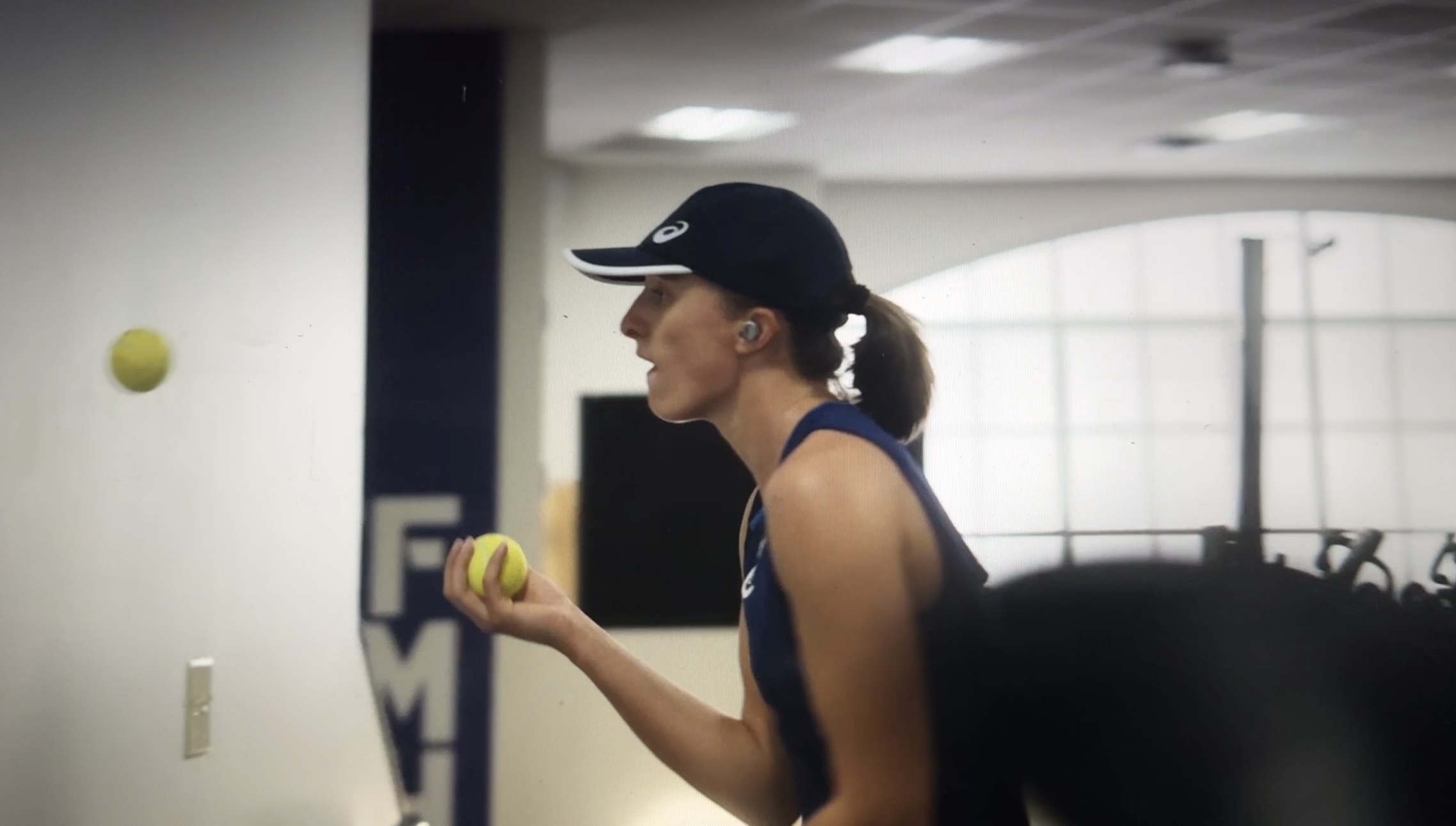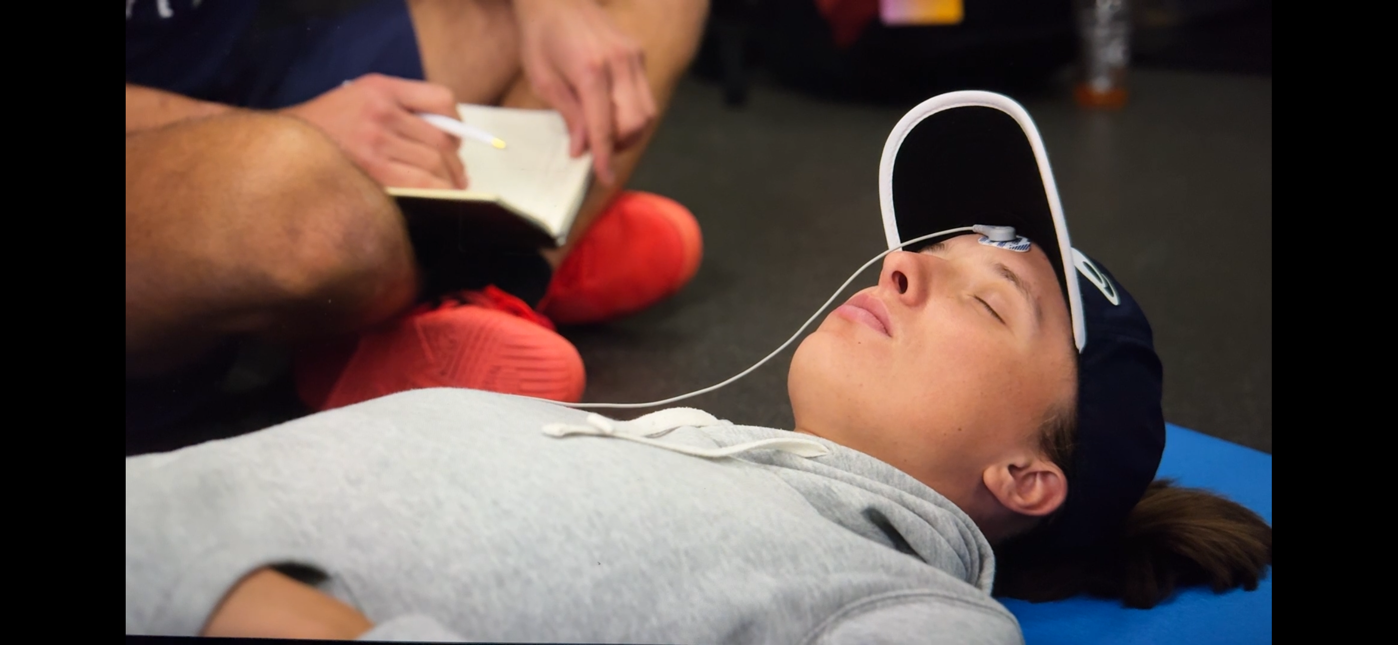This is a rare (and most likely misguided) opportunity to criticize one of Iga Swiatek’s training techniques. In Season 1, “Under Pressure,” on the Netflix docuseries “Break Point,” Swiatek is seen performing reverse throws shortly before a match at the US Open. She inadvertently hits the ceiling with one of her tosses, which gives me creative license to observe that there might be a better way. Alternatively, maybe this is another case of Iga doing everything just a bit better than everybody else.

I prefer the half-kneel reverse throw variation of this exercise. The primary reason is that from the kneeling position, the weighted ball is less likely to hit the ceiling, which is exactly what happened with Swiatek in this scene. This variation scales the exercise to the relatively smaller spaces of home gyms.
The half-kneel reverse throw starts with the athlete in a half-kneeling position with one knee on the floor and the other knee in front at a 90-degree angle. The training partner stands behind the kneeling athlete and delivers a small weighted ball in a gentle arc over one of their shoulders. The athlete catches the ball with a smooth forward motion, decelerating the momentum. The trainee then reverses the arm motion to toss the ball back to the training partner. That’s one rep.
Swiatek is seen performing a different variation on this episode of “Break Point.” The primary difference is that she is standing on one leg. That has obvious functional training benefits for tennis, as it simultaneously works on balance and core stability. The one drawback is that it requires more space and isn’t appropriate for areas with low ceilings.
Reverse half-kneel curls are highly beneficial for tennis players as they develop rotational strength and stability in the shoulder. That is essential for generating power and control during groundstrokes and serves. This exercise is also a staple in baseball for pitchers, who also rely on strong rotational mechanics for velocity and control.
Whether performed in the standing position that Iga Swiatek uses or the more conventional half-kneeling variation, the reverse throw is terrific for tennis players looking to develop rotational strength and stability in the shoulder. It is essential for the sport and highly recommended for anyone with a willing — and capable — training partner.

1 lb weighted ball (<-Sponsored Link)
Fiend At Court participates in the Amazon associates program and receives a paid commission on any purchases made via the links in this article. Details on the disposition of proceeds are available on the “About Fiend at Court” page.



